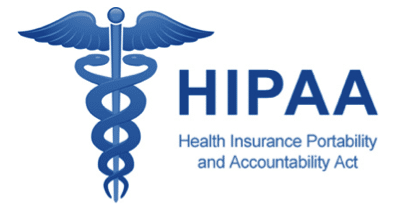
HIPAA mandates strict compliance for the covered segments of hybrid entities, including designated officials, policies, and PHI protection. Non-covered parts support privacy measures for PHI from covered segments, fostering an organization-wide security culture.
What are hybrid entities?
Hybrid entities represent organizations that house both HIPAA covered and non-covered components. Covered components encompass entities like healthcare providers, health plans, or healthcare clearinghouses that handle PHI, and non-covered segments within these organizations aren't directly bound by HIPAA's compliance obligations but play a role in maintaining the integrity of PHI shared from covered components.
According to the HHS, "A covered entity that qualifies as a hybrid entity, meaning that the entity is a single legal entity that performs both covered and non-covered functions, may choose whether it wants to be a hybrid entity. If such a covered entity decides not to be a hybrid entity then it, and all of its components, are subject to the Privacy Rule in its entirety. ".
Read more: How to know if you’re a hybrid entity
HIPAA's impact on hybrid entities
Covered components of hybrid entities must adhere to stringent obligations outlined by the HIPAA Privacy Rule. These obligations range from appointing a designated privacy official responsible for overseeing HIPAA compliance across the entire organization to crafting comprehensive policies and procedures, providing workforce training on HIPAA compliance, and ensuring the safeguarding of PHI handled within covered entity components.
Related: What is a covered entity?
How to designate covered and non-covered components
Identifying covered entity components within hybrid entities requires a meticulous identification process. Organizations must carry this process out with great care and attention to detail. These components, once identified, must comply with HIPAA requirements. Non-covered entity segments, while not directly subjected to HIPAA obligations, are integral to the organizational privacy ecosystem. Hybrid entities should implement measures to prevent unauthorized access or disclosure of PHI from covered components, promoting a culture of privacy and security throughout the organization.
The HIPAA compliance requirements for covered components
- Establishing and implementing policies and procedures that align with HIPAA guidelines,
- Ensuring comprehensive workforce training on HIPAA compliance,
- Securing PHI through robust technological and procedural measures,
- and diligently adhering to strict privacy protocols mandated by HIPAA.
Flexibility and data sharing within hybrid entities
Hybrid entities have flexibility in managing PHI among their covered entity components. HIPAA allows for certain data-sharing practices within the boundaries of compliance, facilitating a smoother exchange of health information among segments while upholding stringent privacy standards.
Related: HIPAA Compliant Email: The Definitive Guide
FAQs
What happens if a hybrid entity fails to designate covered and non-covered components?
Failure to properly designate covered and non-covered components can result in the entire organization being subject to HIPAA regulations, leading to potential compliance issues and penalties.
Can a hybrid entity change its designation status over time?
Yes, a hybrid entity can reassess and change its designation status as organizational functions evolve, but it must ensure that any changes are documented and compliant with HIPAA regulations.
What are the consequences of unauthorized access to PHI within a hybrid entity?
Unauthorized access to PHI can result in severe penalties, including fines and legal action, damage to the organization’sreputation, and loss of patient trust.
Subscribe to Paubox Weekly
Every Friday we'll bring you the most important news from Paubox. Our aim is to make you smarter, faster.




